Armillaria mellea
The fungus Armillaria can attack all fruit trees, including apricots.
Although soil fumigation is sometimes recommended, it typically doesn’t work. This fungus is unusually resistant to fungicides.
Plus, the organism often lurks in the soil in pieces of old infected trees, or in roots in the soil where fungicides can’t contact it.

We link to vendors to help you find relevant products. If you buy from one of our links, we may earn a commission.
There is no good cure for Armillaria root rot, but keeping your plants healthy and free of stressors can help prevent infection.
What You Will Learn
Armillaria Attacks Throughout the World
While Armillaria mellea is the most common source of this type of root rot, many other species could be involved.
Because of this, the disease is usually just referred to as Armillaria, or the honey mushroom or shoestring fungus.
These fungi are so good at persisting in soil that some colonies are thousands of years old. And a colony of Armillaria in Oregon is considered to be the largest organism in the world.
Honey mushrooms attack thousands of types of plants all over the world, and they are very common pathogens of hardwoods or conifers.
Since home gardens and orchards are often located on land that was previously home to hardwood forests, there is a very good chance that Armillaria is hiding in your soil.
Symptoms in Apricot Trees
This disease can take hold without your realizing it. You might first notice the infection if your apricot becomes infected after it is 5 years old.
If so, your apricot tree will have small leaves and poor terminal growth until the unthinkable happens – it suddenly collapses in the summer.
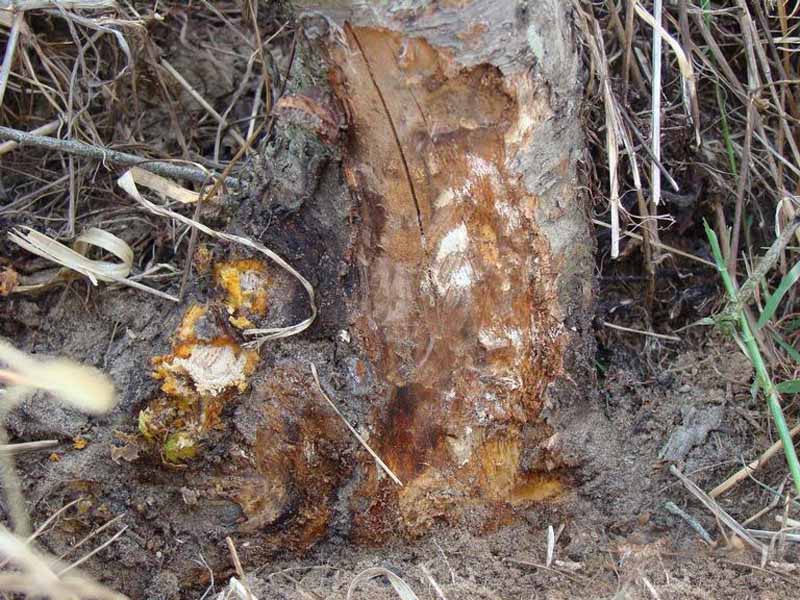
A classic symptom in orchards is that there will be a circle of infected trees surrounding the original plant that contracted this type of root rot.
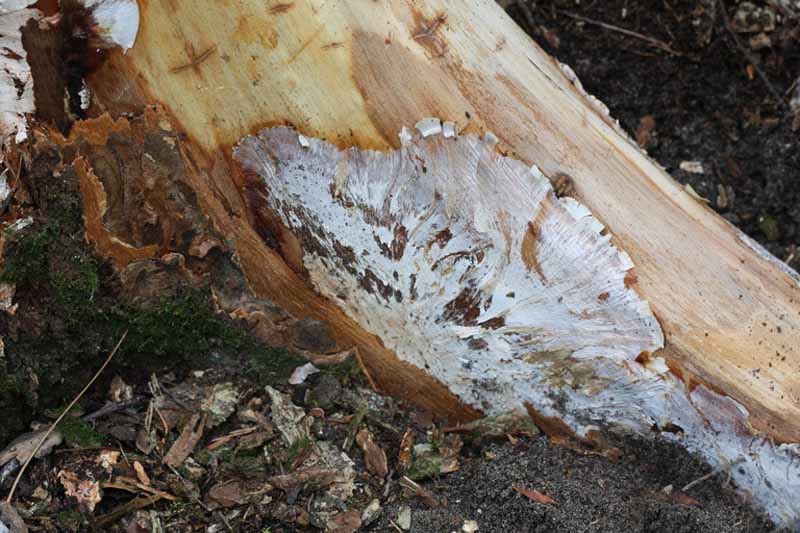
You can tell if the cause is Armillaria by looking between the bark and wood of the crown. If this fungus is the culprit, you are likely to find a fan-shaped white fungal mat growing between the bark and the wood.
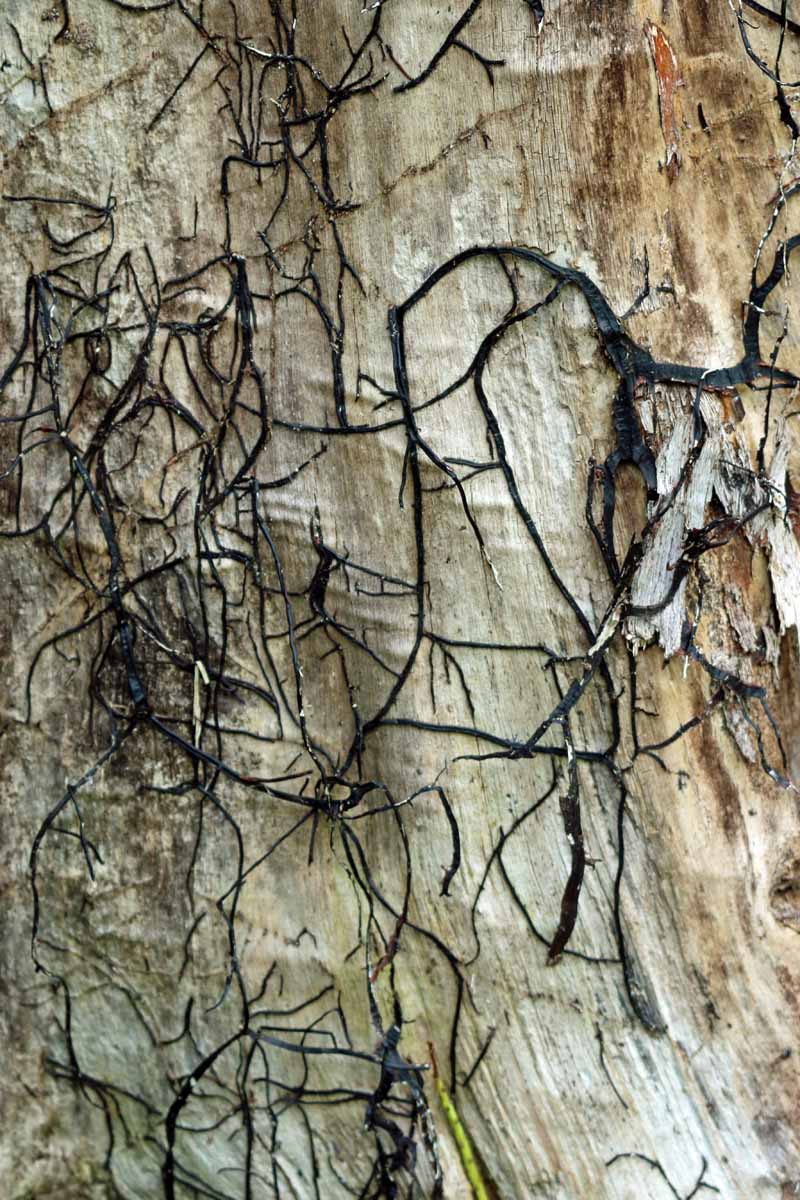
The fungi produce characteristic structures called rhizomorphs, dark-colored strands of fungal threads that can persist in the soil indefinitely. They can strike as soon as they sense a weakened tree.
Another telltale sign is the tan-colored mushrooms produced at the base of trees in the summer or fall. The fact that these fungi are edible is probably small solace.
How the Fungus Spreads
A small piece of an infected root or the remains of a stump from an infected tree is all it takes for this fungus to gain a foothold.
However, the most common way that Armillaria spreads is when the root of an infected tree grows up to your apricot’s root. The fungus can then spread to your plant.
This fungus also spreads via the aforementioned rhizomorphs. You can think of these strands as being like foraging plant roots. In this case, they forage into uninfected roots and infect them.
A less common mode of infection is via windblown spores from the mushrooms. However, these spores can only grow on wood that is injured or already dead.
How to Prevent Armillaria Disease on Apricots
There are steps you can take before planting your apricot tree to minimize the chances of infection:
1. Prepare the Planting Area
Comb through the soil and purge bits of old roots or pieces of wood that could harbor the fungus.
Agriculture Victoria, the agriculture portfolio of The Department of Jobs, Precincts and Regions of the Victoria State Government of Australia, recommends steps to take with native trees before removing them to plant your apricot.
First, girdle or ring-bark wild trees in the area by removing a narrow strip of bark from the entire circumference of the trunk, and leave the tree alone for at least six months. With its starch reserves depleted, girdled specimens will become less of a target for infection.
A number of experts recommend that you plant an annual crop for several years to help reduce the amount of Armillaria present in the soil before planting stone fruit.
And always be sure to make sure the soil drains properly before planting! Excess moisture can harbor fungal growth.
2. Don’t Grow Lawn Grass Close to Your Tree
If you grow sod up to the base of your tree, that can encourage the honey mushroom to attack your apricot.
3. Keep Your Tree in Good Health
Once your tree is established, try to maintain conditions that will keep it in the pinnacle of health. Armillaria will sense when trees are weak and can infect them.
Proper fertilization will help, as will treating any disease or insect infestations that would cause your apricot tree to lose its leaves.
Drought will increase the chances of infection. Growing cover crops will increase the soil moisture and help to prevent drought stress.
Flooding will also increase stress on your plants.
Factors that are out of your control that increase the chances of infection include nearby construction or fill.
How to Treat a Slightly Infected Tree
Exposure to air can kill Armillaria, so if you catch the infection in the early phase, drastic measures might help.
Dig a trench by removing the soil from around the base of the tree’s trunk and its main roots. Do this in a radius of about 2.3 feet.
High-pressure water can help you accomplish this goal.
Remove the diseased roots and bark and burn them, and then use a plastic paint to paint the cuts.
Keep the soil away from your tree, and you might have some hope of saving it.
The University of California Integrated Pest Management (IPM) program recommends putting a tarp down around the sides of the trench to keep any remaining fungi from traveling through the soil to your other trees.
If your tree is severely infected, you will have to remove it, and burn the stump and all the roots that you can find.
Armillaria is a Widespread Pathogen
Armillaria attacks native trees and shrubs all over the world.
This fungus serves a purpose in nature by helping to keep forests clear of dying trees. However, this tendency can be fatal to your apricot tree.
If you plan to plant an apricot tree, purge the soil of bits of wood and roots remaining from any trees that previously grew on the land.
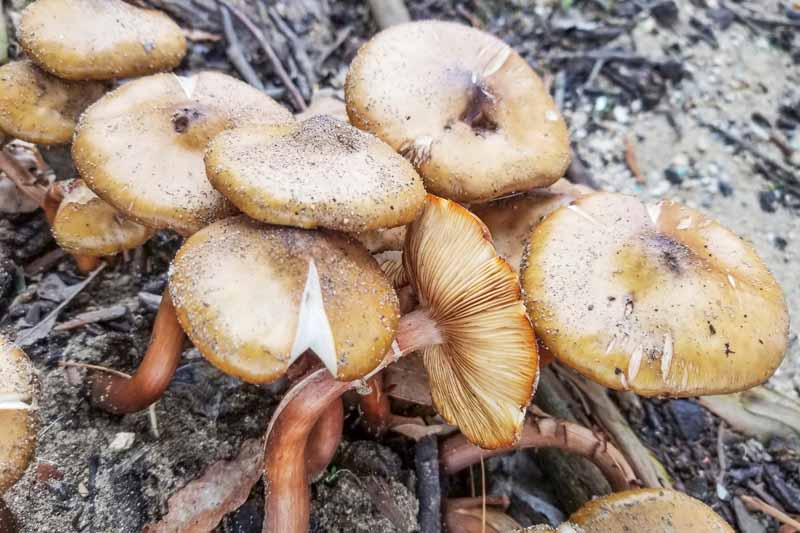
Since the honey mushroom only attacks weakened apricots, minimizing the stress on your tree can help protect it from this potential onslaught.
If you catch the infection early enough, you might be able to save your plantings.
However, if your tree is too far gone, you will need to be ruthless and destroy it.
This fungus does not infect grasses, and growing them on the site for several years before you replant can help to cleanse the soil.
After all, you do not want to establish a colony that can live for thousands of years!
Have you had an Armillaria root rot infection on an apricot tree? If so, tell us how your tree fared and the steps that you took for prevention or control.
For more information on growing apricot trees, take a look at some of our other guides:
- How to Grow and Care for Apricot Trees
- 7 of the Best Cold Hardy Apricot Trees
- How to Identify and Control Peach Twig Borers
© Ask the Experts, LLC. ALL RIGHTS RESERVED. See our TOS for more details. Uncredited photos: Shutterstock.
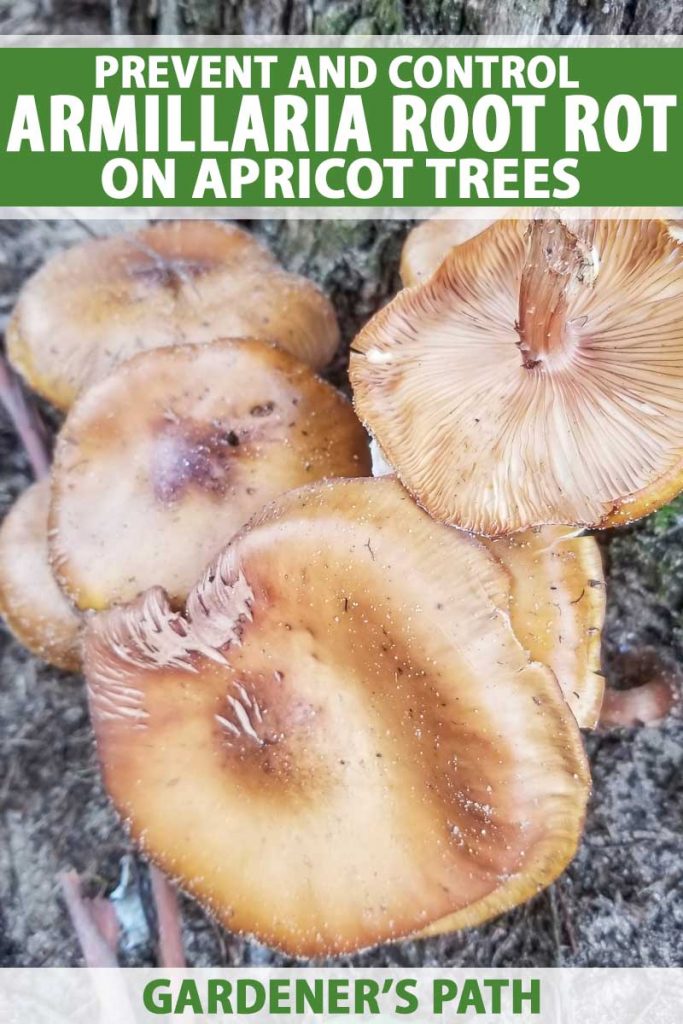
Dear Helga,
Do you know if any recent research has encouraged the use of Trichoderma-based products against Honey Fugus?
Thank you.
There have been a few studies in the last few years that reinforce the idea that Trichoderma can help against honey fungus. Bartlett Tree Experts recently funded a study and they conclude that you should “[a]pply a Trichoderma based soil biocontrol agent in combination with RCX to act as a long term natural root protectant system.”